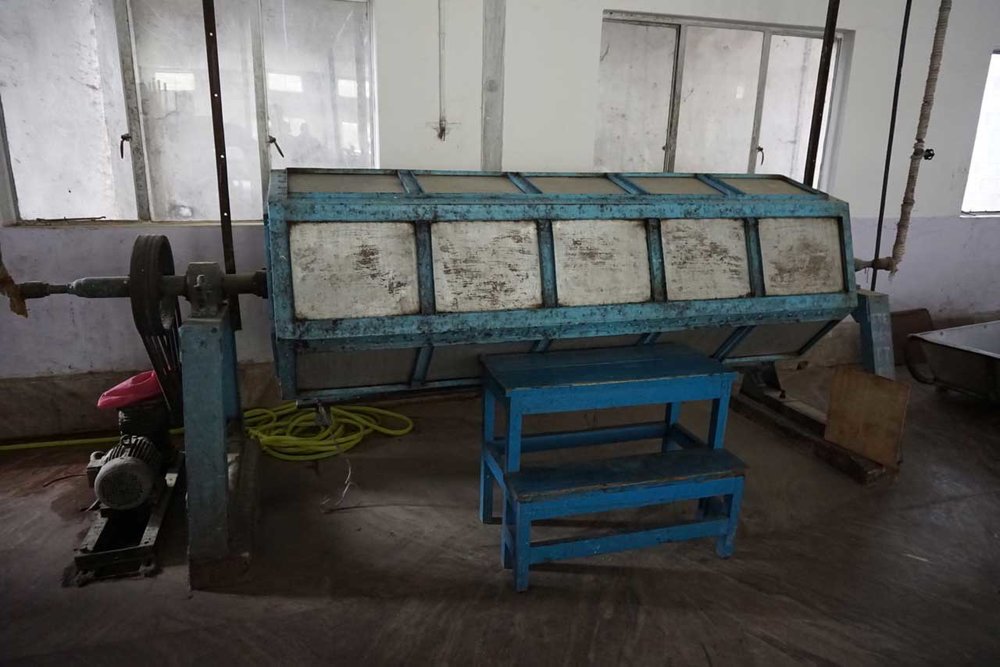There's More to Darjeeling Tea Than Darjeeling

But tea bushes don’t pay attention to geographic borders, and there’s a lot more to know about Darjeeling-style teas beyond the bounds of Darjeeling and West Bengal.
About 30 miles north of Darjeeling, across the Rangeet River and nestled between Nepal and Bhutan, lies Temi, a tea estate that climbs to over 5,000 feet. Temi is the first tea garden in Sikkim, a once-independent kingdom with a Buddhist ruler called the Chogyal; it became a British protectorate in 1890, and an Indian state in 1975.

The tea made at Temi recalls a classic Darjeeling profile that is increasingly hard to find: rich and spicy, almost bracing in the cup, with layers of orange, nutmeg, and ginger. This beefy texture and robust taste can be attributed to the T87 cultivar, a strain of Camellia sinensis var. sinensis once common in Darjeeling that has since lost its popularity. After tasting this spring’s first flush production while at Temi, adding it to our catalog was a no-brainer. Not only is the tea delicious, it’s a drinkable lesson in Himalayan history.
In the 1990s, I had the fortune of meeting Teddy Young, one of the last generation of British tea planters in India and the man responsible for making Temi the proud estate it is today. He explained to me that the British government established the garden in 1969, in part as a resettlement opportunity for Tibetan refugees. But the garden was disorganized, the tea hardly worth drinking.
“When I arrived in 1973, my impression was the whole project was on its last legs,” he said. “Nothing repaired, tractors without wheels, vehicles not working. The whole scheme looked as if it was all rather a shot in the blue, very bureaucratic and government-run.”

Young grew up in Darjeeling as the son of a medical merchant, and it didn’t take him long to gravitate to tea. Back in the colonial era, the only way to learn about running a tea garden was to do the actual work. “The technical side of tea one just had to pick up,” he told me. “You arrived at the garden, the manager would usually receive you, and say, ‘Well, there’s the bungalow, and starting tomorrow you have to be at the office at so-and-so time.’” Young did just that, studying tea effectively through an oral tradition of British, Bengali, and Nepali farm workers. (Even today, many Darjeeling estates rely exclusively on ancient leather-bound ledgers to keep records, and most institutional knowledge is learned on the job.)
This was the practical education that Young and his assistant managers—one a Sikkimese local, another a long-time colleague from Nepal—applied to rehabilitating Temi’s tea production. Young ran the estate through 1982, when he started butting heads with the newly elected chief minister of Sikkim. The new minister, he said, was eager to establish his own bona fides and procedures, current supply chains and logistics be damned. Or as Young put it, in the most veiled British politeness he could muster, “And of course that came to pass.”

Fortunately, Temi has continued to grow quality tea and thrive, with a new generation of managers responsible for maintaining the oral traditions and specialized knowledge that make these Darjeeling-style teas possible. The estate became certified organic in 2005, and continues to devote ample space to the historic T87 cultivar. 2018 is the first year we’ve carried Temi’s tea, but it will not the be the last.
For now, try other Sikkim tea from the nearby Bermiok Estate.
